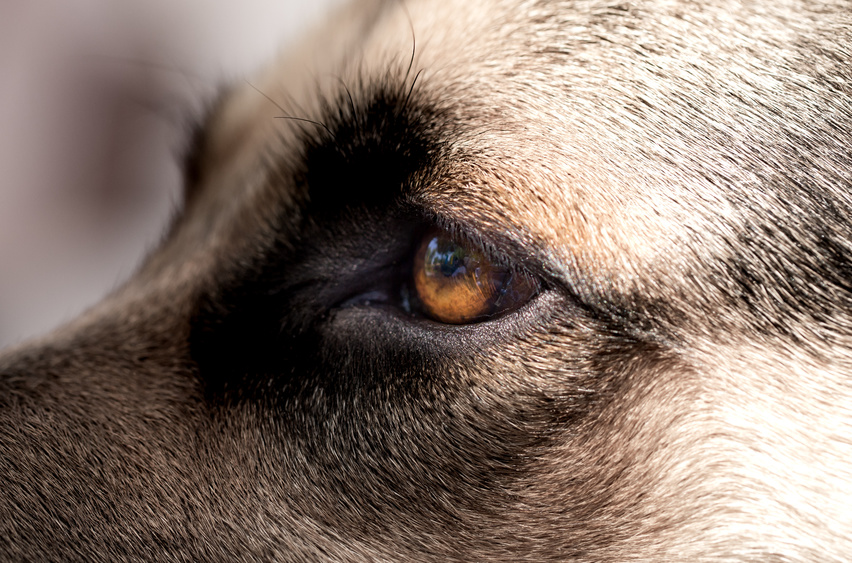What if there was an eye condition that affected 1 in 10 dogs, which could ultimately lead to blindness? You’d want to know about it, right?
Well, this condition exists and it’s called ‘Dry eye’ (Kerato Conjunctivitis Sicca / KCS)

What is Dry Eye?
Dry eye occurs when the eye fails to produce enough tear fluid. To understand how this feels think of a long flight in an air conditioned cabin. Those itchy, barbed wire blinks are a fraction of the discomfort suffered by a dog with dry eye.
Dry eye has a hereditary component and is more common in certain breeds, such as:
- German shepherds
- Cocker spaniels
- Boston terriers
Experts believe exposure to high UV light make KCS worse… an argument in favour of doggy sunglasses!
Ultimately the cause of KCS involves the body’s immune system attacking its own tear-producing glands to shut them down.
What are the Signs of Dry Eye?
It’s well worth being alert to the signs just in case your dog is affected. These include:
- A thick, tacky discharge from the eye
- The surface of the eye looks dull
- Recurrent eye ulcers
- A sore, red eye
- Brown pigment deposits on the transparent cornea
- Holding the eye closed
In the early stages the eye looks an angry red with a gloopy discharge. But over time the eye loses its characteristic glisten, brown pigment forms on the surface, and the eye is constantly sticky.
“Ultimately the cause of KCS involves the body’s immune system attacking its own tear-producing glands to shut them down”

Diagnosing Dry Eye
Dr Chris or Dr Tash will examine the eye carefully, using magnification. Then they measure the amount of tear fluid produced using a Schirmer tear test, and check for damage with a special ophthalmic dye.
Treating Dry Eye
Treatment is about control rather than cure. However, there are excellent topical products available to switch off that inappropriate immune response and lubricate the eye.
But please, if you are suspicious your dog has dry eye, act sooner rather than later. This saves your fur friend from unnecessary discomfort along with the potentially serious consequences.
